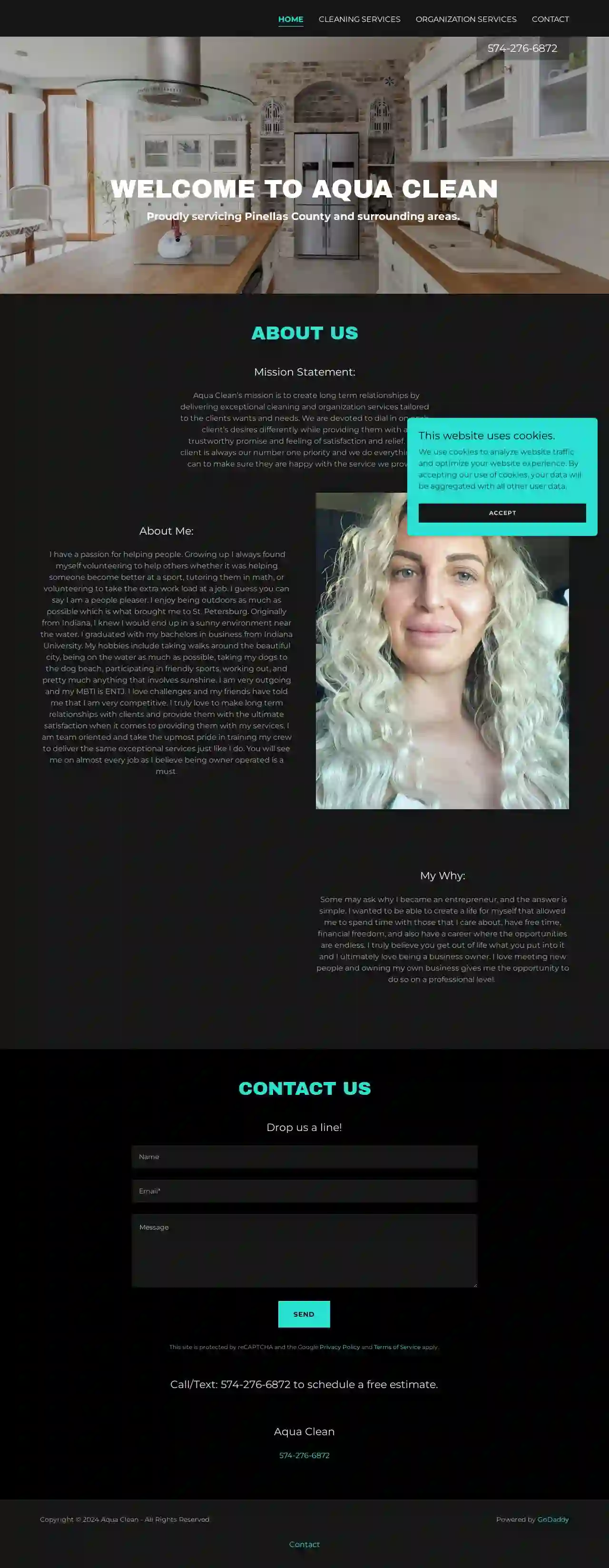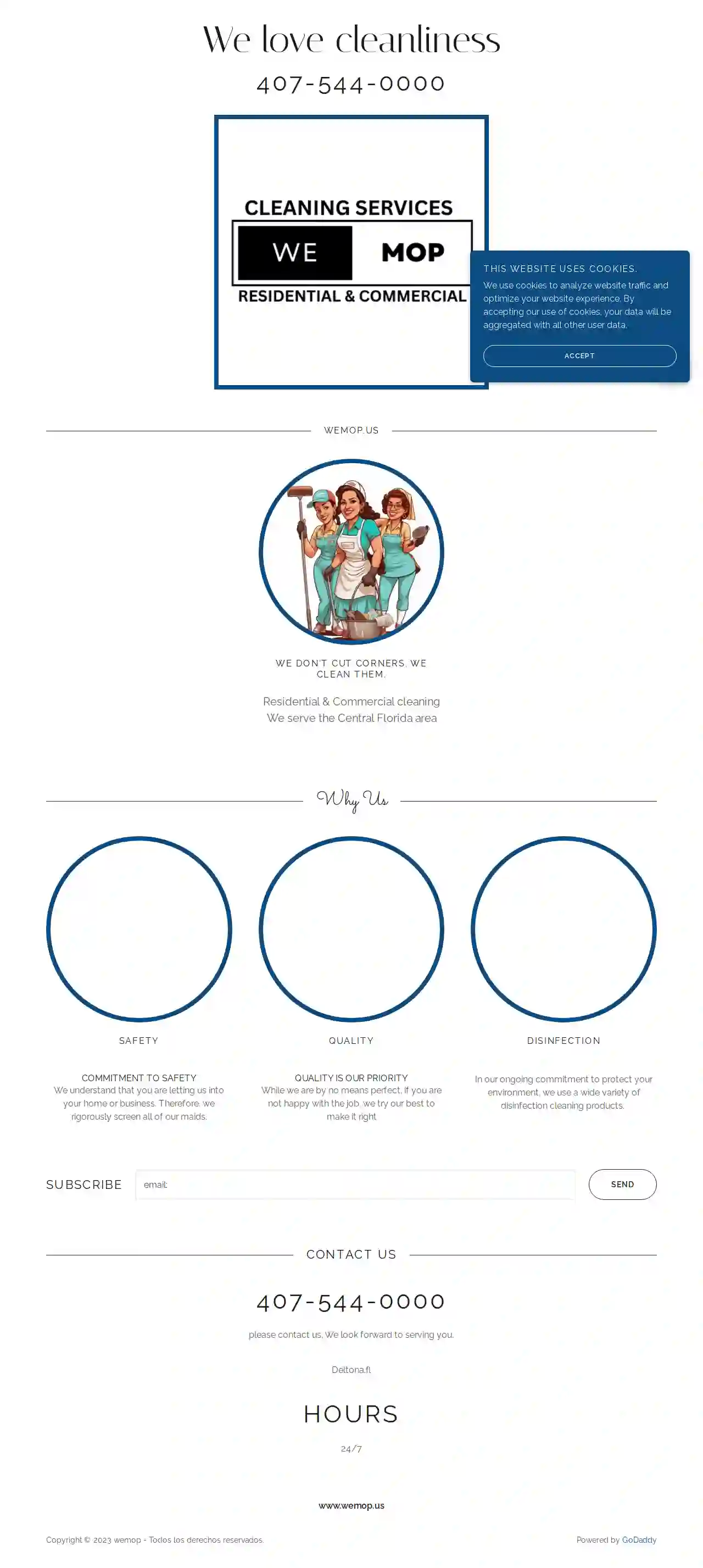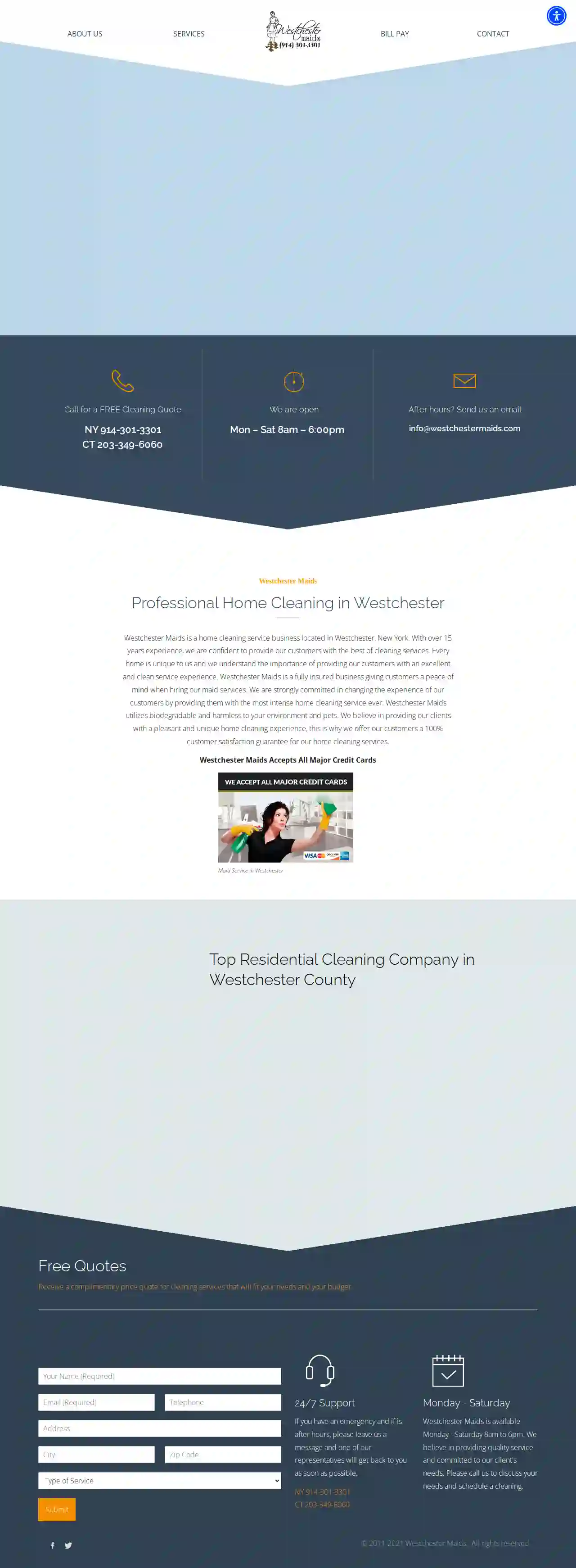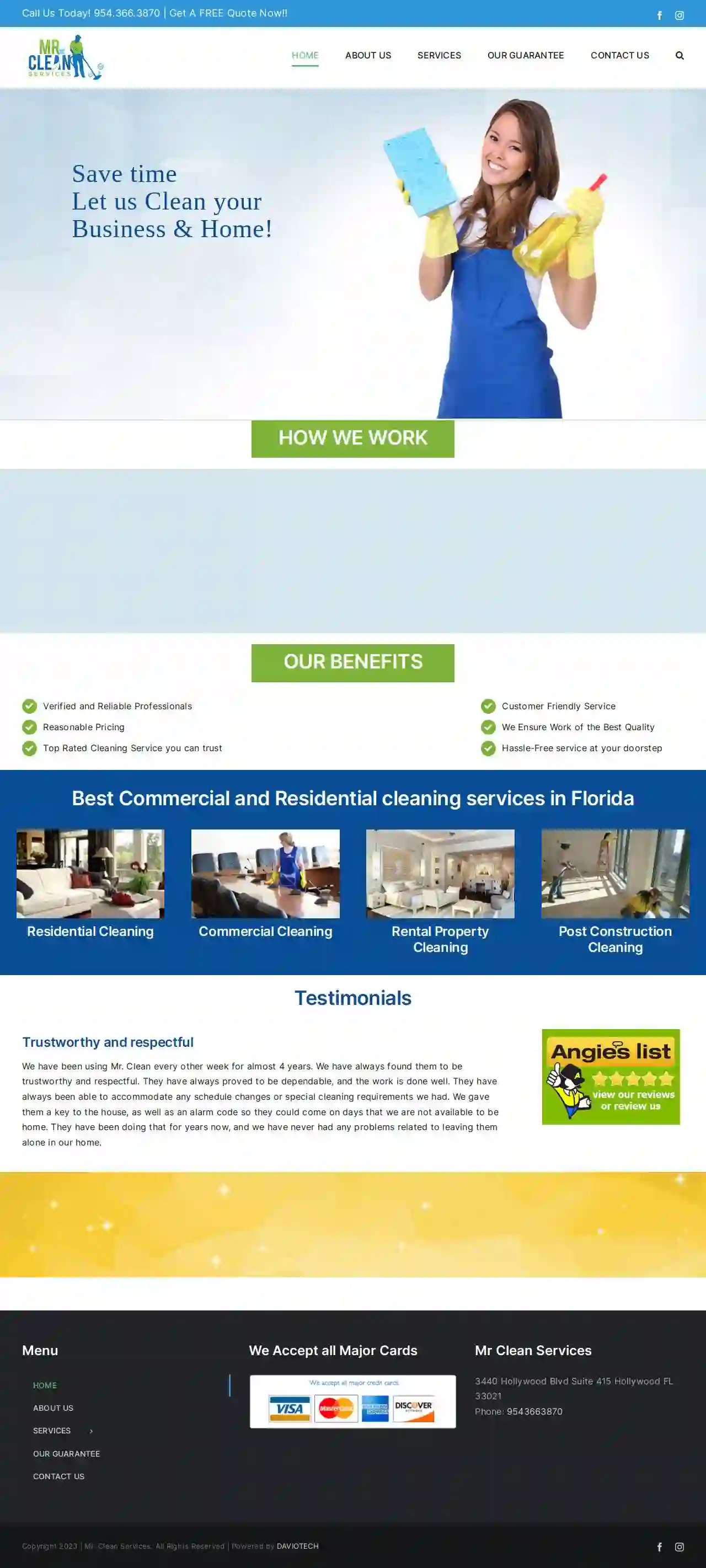Cleaning Services South Bradenton
Find Apartment Cleaning in South Bradenton
Receive 3 FREE Apartment Cleaning quotes for your project today! Compare profiles, reviews, accreditations, portfolio, etc... and choose the best deal.
Service Needed
City or Town
- Pe
Perfectly Cleaning & Maintenance LLC
517 reviewsCape Coral, US- Services
- Why Us?
Get Quote 
Aqua Clean Cleaning Services LLC
531 reviewsTampa, US- Services
- Why Us?
Get Quote
Wemop
53 reviewsDeltona, US- Services
- Why Us?
Get Quote- Sh
Shining Diamond by Ls Cleaning Services
55 reviewsOrlando, US- Services
- Why Us?
Get Quote 
Westchester Maids
543 reviewsWestchester, US- Services
- Why Us?
Get Quote
iEcoCleaning Llc - Residential Cleaning Services | Office Cleaning Services | Cleaning Service
523 reviewsOrlando, US- Services
- Why Us?
Get Quote
LUXE Cleaning Services, LLC
535 reviewsTampa, US- Services
- Why Us?
Get Quote
Maid to Clean Orlando
541 reviewsOrlando, US- Services
- Why Us?
Get Quote
JDM House Cleaning Services
511 reviewsLeesburg, US- Services
- Why Us?
Get Quote
Mr. Clean Services
51 reviewsHollywood, US- Services
- Why Us?
Get Quote
Over 60,241+ Janitorial Businesses onboarded
Our janitorial service providers operate in South Bradenton & surrounding areas!
CleaningMatch has curated and vetted the Best Janitorial Companies arround South Bradenton. Find a reliable business today.
Frequently Asked Questions About Cleaning Services
Find answers to common questions about cleaning services and hiring cleaning companies in the USA.
- Ventilation: Improve ventilation by opening windows, turning on the exhaust fan, and using a dehumidifier to reduce moisture levels.
- Bleach Solution: Mix one cup of bleach with one gallon of water. Wear gloves and eye protection when handling bleach. Apply the solution to the affected area, let it sit for 10-15 minutes, then scrub with a brush and rinse thoroughly.
- Vinegar Solution: For a milder alternative, mix equal parts water and vinegar. Apply to the moldy area, let it sit for an hour, then scrub and rinse.
- Baking Soda Paste: Make a paste of baking soda and water, apply to the moldy area, let it dry, then scrub and rinse. Baking soda helps remove stains and deodorize.
- Commercial Mold and Mildew Remover: Use a commercial mold and mildew remover according to the product instructions.
- White Vinegar: A versatile cleaner that cuts through grease, removes stains, and deodorizes. Mix equal parts water and vinegar for a general-purpose cleaner.
- Baking Soda: A natural abrasive and deodorizer. Sprinkle baking soda on surfaces, let it sit, then scrub and rinse.
- Lemon Juice: Acts as a natural bleaching agent and disinfectant. Mix lemon juice with water for a cleaning solution or use it directly on stains.
- Castile Soap: A gentle and biodegradable soap made from plant oils. Mix a few drops of castile soap with water for a versatile cleaning solution.
- Essential Oils: Add a few drops of essential oils like tea tree oil or lavender oil to cleaning solutions for a natural fragrance and antibacterial properties.
- Cleaning: Removing dirt, dust, and debris from surfaces using soap or detergent and water. It improves the appearance and removes visible contaminants.
- Sanitizing: Reducing the number of bacteria on surfaces to a safe level. It uses chemical disinfectants or heat to kill or inactivate bacteria.
- Disinfecting: Killing or inactivating most disease-causing microorganisms on surfaces. It uses stronger chemical disinfectants than sanitizing and targets a wider range of pathogens.
How do I remove mold and mildew from my bathroom?
Mold and mildew can grow in damp areas like bathrooms, posing health risks and aesthetic concerns. Here's how to remove them:
Always test any cleaning solution on a small, inconspicuous area first. After cleaning, take steps to prevent future mold growth by addressing moisture issues, such as fixing leaks and improving ventilation.
Always test any cleaning solution on a small, inconspicuous area first. After cleaning, take steps to prevent future mold growth by addressing moisture issues, such as fixing leaks and improving ventilation.
Do I need to provide cleaning supplies for the cleaning service?
Most professional cleaning services provide their own cleaning supplies and equipment, including vacuums, mops, cleaning solutions, and microfiber cloths. However, it's always best to confirm this with the company before hiring them.
If you have specific preferences for cleaning products, such as eco-friendly or hypoallergenic options, communicate those to the cleaning service. They may accommodate your requests or allow you to provide your preferred supplies.
If you have specific preferences for cleaning products, such as eco-friendly or hypoallergenic options, communicate those to the cleaning service. They may accommodate your requests or allow you to provide your preferred supplies.
What are some eco-friendly cleaning solutions?
Eco-friendly cleaning solutions are becoming increasingly popular as people prioritize sustainability and a healthier indoor environment. Here are some effective and eco-friendly cleaning solutions:
Remember to test these solutions on a small, inconspicuous area first to ensure they don't damage delicate surfaces.
Remember to test these solutions on a small, inconspicuous area first to ensure they don't damage delicate surfaces.
What is the difference between cleaning, sanitizing, and disinfecting?
While often used interchangeably, cleaning, sanitizing, and disinfecting have distinct meanings:
Cleaning is usually the first step, followed by sanitizing or disinfecting depending on the level of hygiene required.
Cleaning is usually the first step, followed by sanitizing or disinfecting depending on the level of hygiene required.
How do I remove mold and mildew from my bathroom?
Mold and mildew can grow in damp areas like bathrooms, posing health risks and aesthetic concerns. Here's how to remove them:
Always test any cleaning solution on a small, inconspicuous area first. After cleaning, take steps to prevent future mold growth by addressing moisture issues, such as fixing leaks and improving ventilation.
- Ventilation: Improve ventilation by opening windows, turning on the exhaust fan, and using a dehumidifier to reduce moisture levels.
- Bleach Solution: Mix one cup of bleach with one gallon of water. Wear gloves and eye protection when handling bleach. Apply the solution to the affected area, let it sit for 10-15 minutes, then scrub with a brush and rinse thoroughly.
- Vinegar Solution: For a milder alternative, mix equal parts water and vinegar. Apply to the moldy area, let it sit for an hour, then scrub and rinse.
- Baking Soda Paste: Make a paste of baking soda and water, apply to the moldy area, let it dry, then scrub and rinse. Baking soda helps remove stains and deodorize.
- Commercial Mold and Mildew Remover: Use a commercial mold and mildew remover according to the product instructions.
Always test any cleaning solution on a small, inconspicuous area first. After cleaning, take steps to prevent future mold growth by addressing moisture issues, such as fixing leaks and improving ventilation.
Do I need to provide cleaning supplies for the cleaning service?
Most professional cleaning services provide their own cleaning supplies and equipment, including vacuums, mops, cleaning solutions, and microfiber cloths. However, it's always best to confirm this with the company before hiring them.
If you have specific preferences for cleaning products, such as eco-friendly or hypoallergenic options, communicate those to the cleaning service. They may accommodate your requests or allow you to provide your preferred supplies.
If you have specific preferences for cleaning products, such as eco-friendly or hypoallergenic options, communicate those to the cleaning service. They may accommodate your requests or allow you to provide your preferred supplies.
What are some eco-friendly cleaning solutions?
Eco-friendly cleaning solutions are becoming increasingly popular as people prioritize sustainability and a healthier indoor environment. Here are some effective and eco-friendly cleaning solutions:
Remember to test these solutions on a small, inconspicuous area first to ensure they don't damage delicate surfaces.
- White Vinegar: A versatile cleaner that cuts through grease, removes stains, and deodorizes. Mix equal parts water and vinegar for a general-purpose cleaner.
- Baking Soda: A natural abrasive and deodorizer. Sprinkle baking soda on surfaces, let it sit, then scrub and rinse.
- Lemon Juice: Acts as a natural bleaching agent and disinfectant. Mix lemon juice with water for a cleaning solution or use it directly on stains.
- Castile Soap: A gentle and biodegradable soap made from plant oils. Mix a few drops of castile soap with water for a versatile cleaning solution.
- Essential Oils: Add a few drops of essential oils like tea tree oil or lavender oil to cleaning solutions for a natural fragrance and antibacterial properties.
Remember to test these solutions on a small, inconspicuous area first to ensure they don't damage delicate surfaces.
What is the difference between cleaning, sanitizing, and disinfecting?
While often used interchangeably, cleaning, sanitizing, and disinfecting have distinct meanings:
Cleaning is usually the first step, followed by sanitizing or disinfecting depending on the level of hygiene required.
- Cleaning: Removing dirt, dust, and debris from surfaces using soap or detergent and water. It improves the appearance and removes visible contaminants.
- Sanitizing: Reducing the number of bacteria on surfaces to a safe level. It uses chemical disinfectants or heat to kill or inactivate bacteria.
- Disinfecting: Killing or inactivating most disease-causing microorganisms on surfaces. It uses stronger chemical disinfectants than sanitizing and targets a wider range of pathogens.
Cleaning is usually the first step, followed by sanitizing or disinfecting depending on the level of hygiene required.